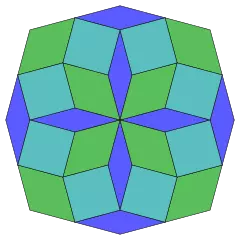In the fascinating realm of geometry, we encounter various intriguing shapes and figures. One such enigmatic figure is the octagon, an eight-sided polygon that never fails to capture our attention. Derived from the Greek word "oktágōnon," meaning "eight angles," the octagon boasts a mesmerizing symmetrical structure and distinctive properties.
Unveiling the Octagon's Properties
Let's begin by unraveling the properties that make the octagon so captivating. A regular octagon, symbolized by {8}, possesses sides of equal length and internal angles of identical size. Its remarkable symmetry is illustrated by eight lines of reflective symmetry, along with rotational symmetry of order 8. The internal angle at each vertex is 135°, while the central angle is 45°.
The sum of all internal angles in an octagon amounts to 1080°, with the external angles totaling 360°. Intriguingly, if squares are constructed either internally or externally on each side of an octagon, the midpoints of the segments connecting the centers of opposite squares form a unique quadrilateral. This quadrilateral is both equidiagonal and orthodiagonal, meaning its diagonals are equal in length and perpendicular to each other.
Exploring the Area and Construction of an Octagon
Measuring the area of a regular octagon can be done using several formulas. One approach involves utilizing the side length, resulting in an area of approximately 4.828 times the square of the side length. Another method involves considering the circumradius or apothem of the octagon, resulting in the respective formulas and approximations.
When constructing a regular octagon, an interesting approach involves folding a sheet of paper, as demonstrated in the image below. By following specific steps involving diameters and bisectors, one can achieve a perfectly constructed octagon.
 An octagon constructed by folding a sheet of paper.
An octagon constructed by folding a sheet of paper.
Practical Applications and Unveiling Symmetries
Beyond its intrinsic geometric allure, the octagon finds practical applications in architecture and design. Architectural marvels like the Dome of the Rock in Jerusalem and the Tower of the Winds in Athens showcase the octagon's prominent role in shaping the aesthetics of various structures. Octagonal floor plans, such as those found in offices or religious buildings, offer functional advantages by separating different areas or providing a unique sense of space.
In terms of symmetries, the regular octagon exhibits an array of fascinating characteristics. Its symmetries include Dih4, Dih2, and Dih1, along with cyclic subgroups like Z8, Z4, Z2, and Z1. Each subgroup symmetry offers a distinct degree of freedom, resulting in a diverse range of irregular forms.
Unlocking the Mystery of the Octagon
The octagon continues to captivate mathematicians, architects, and enthusiasts alike with its intriguing properties and aesthetic appeal. Its symmetrical structure, distinctive properties, and versatile applications have solidified its place in the realm of geometry. Whether we appreciate its beauty in architectural designs or explore its mathematical intricacies, the octagon stands as a testament to the wonders of geometry.
Please note: The original article contained various images and diagrams depicting the octagon's properties and construction. Kindly refer to the original source for visual references and further exploration.












